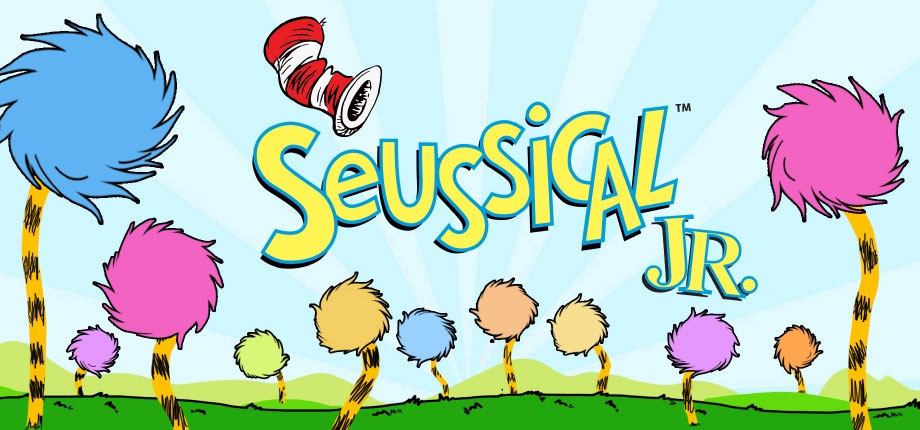Before diving into directing, it's crucial to understand what "Seussical Jr." entails. This abridged version of the full-length "Seussical the Musical" is tailored for younger casts. It typically runs about 60 minutes, making it perfect for school or community theater settings. The script combines various Dr. Seuss stories, with "Horton Hears a Who" and "The Cat in the Hat" as central narratives. Familiarize yourself with the script, music, and characters to guide your vision for the production. Understanding the show's themes and moral lessons can also help you convey its message effectively to both the cast and the audience. Taking the time to delve deep into the narrative and musical elements ensures that you can provide a comprehensive and engaging experience that stays true to Dr. Seuss's original intent.
Casting the Right Talent
Emphasizing Character Over Talent
In children's theater, it's essential to focus on character portrayal rather than just vocal talent. Encourage young actors to embody the whimsical and exaggerated nature of Dr. Seuss's characters. Look for performers who can bring energy and creativity to roles like Horton, Gertrude, and the mischievous Cat in the Hat. Remember, confidence and enthusiasm often trump technical skills in making a memorable performance. Emphasizing character development over vocal perfection allows young performers to connect with their roles on a deeper level, fostering a sense of ownership and pride in their performances. This approach not only enhances the authenticity of the production but also helps young actors gain valuable skills in character analysis and emotional expression.
Inclusive Casting
"Seussical Jr." offers a diverse range of roles, making it an excellent opportunity for inclusive casting. Consider using a flexible approach to casting by allowing actors to audition for multiple roles. This not only gives more children a chance to shine but also helps create a dynamic and engaging ensemble cast. Inclusive casting encourages diversity and representation, enriching the overall experience for both the cast and the audience. By valuing each child's unique abilities and background, you create a production that celebrates diversity and fosters a welcoming environment where every performer feels valued and included.
Building a Team
Collaborative Effort
Directing a musical is a collaborative endeavor. Assemble a team of dedicated volunteers or staff to handle various aspects of the production, such as choreography, music direction, and costume design. Working together, your team can provide a supportive environment for young performers and ensure a smooth production process. Collaboration among team members encourages the sharing of ideas and resources, leading to innovative solutions and enhanced creativity. By fostering open communication and mutual respect within your team, you create a cohesive and efficient working environment where everyone can contribute to the success of the production.
Parental Involvement
Involve parents and guardians in the production process. Parents can assist with costumes, set design, and backstage management. Encourage open communication with parents to ensure everyone is informed about rehearsal schedules and expectations. A cooperative relationship with parents can significantly enhance the overall success of the production. Engaging parents not only provides additional support but also strengthens the community aspect of the production, fostering a sense of belonging and shared purpose. By involving parents, you also create opportunities for families to bond over shared experiences, enhancing the overall impact of the production on the community.
Rehearsal Tips
Structured Rehearsals
Plan structured rehearsals that focus on different aspects of the production, such as blocking, choreography, and vocal training. Break down scenes into manageable sections and work on them sequentially. This approach helps young performers build confidence and understanding of the storyline. Structured rehearsals provide a clear framework that guides young actors through the learning process, ensuring that they develop the skills and confidence needed to deliver outstanding performances. By maintaining a well-organized rehearsal schedule, you can track progress effectively and address any challenges that arise in a timely manner, ensuring a seamless production.
Encourage Creativity
While structure is essential, allow room for creativity during rehearsals. Encourage actors to experiment with their characters and try new interpretations. Provide constructive feedback and create a safe space for performers to express themselves. This freedom can lead to unique and engaging performances. Allowing creativity to flourish during rehearsals helps young performers develop their artistic instincts and gain confidence in their abilities. By fostering an environment where experimentation is encouraged, you empower young actors to take risks and explore their potential, leading to richer and more nuanced performances.
Set and Costume Design
Embracing Whimsy
The world of Dr. Seuss is vibrant and imaginative. Incorporate bold colors and whimsical designs into your set and costumes. Use simple yet effective props to create the fantastical elements of Seuss's stories. Collaborate with your design team to bring the magical world of "Seussical Jr." to life on stage. Embracing the whimsy of Dr. Seuss's works allows you to capture the essence of his storytelling, creating a visually captivating production that delights audiences of all ages. By focusing on creative and imaginative design elements, you can create an immersive experience that transports audiences into the magical world of Seuss.
Budget-Friendly Solutions
Children's theater often operates on a limited budget. Get creative with resources by repurposing materials and seeking community donations. Encourage parents and volunteers to contribute their skills and materials to help create costumes and sets. With resourcefulness and teamwork, you can achieve a visually stunning production without breaking the bank. By adopting a resourceful approach to set and costume design, you can create high-quality productions that maximize the impact of your available resources. This not only reduces costs but also encourages community involvement and support, strengthening the connections between the production and its audience.
Rent Existing Costumes
MTI hosts a community marketplace where theaters can rent or buy costumes, props and backgrounds from other theaters who have previously performed the show. This is a great way to save time and headache so you don't need to design everything yourself.

Music and Choreography
Simplifying Choreography
"Seussical Jr." features lively musical numbers that require choreography. Tailor the dance routines to the skill level of your performers. Simple yet effective choreography can enhance the storytelling without overwhelming young actors. Work closely with your choreographer to create routines that are both fun and achievable. Simplifying choreography ensures that young performers can focus on delivering expressive and confident performances that effectively convey the narrative. By creating choreography that aligns with the abilities of your cast, you enhance their confidence and ensure that the production remains engaging and enjoyable for both performers and audiences.
Vocal Training
Provide vocal training to help young performers deliver their best musical performances. Focus on teaching basic vocal techniques, such as breath control and projection. Encourage regular vocal warm-ups and offer guidance on how to maintain vocal health throughout the production. Vocal training not only improves the quality of the performances but also helps young actors develop essential skills that will benefit them in future productions. By prioritizing vocal health and technique, you ensure that your performers can deliver powerful and expressive musical numbers that captivate audiences and convey the emotional depth of the story.
Technical Aspects
Sound and Lighting
Sound and lighting play a crucial role in enhancing the overall atmosphere of the production. Ensure your technical team is well-prepared to handle the demands of the show. Conduct technical rehearsals to fine-tune audio levels and lighting cues. Clear communication between the director and technical crew is essential for a seamless performance. By prioritizing sound and lighting, you can create a polished and professional production that enhances the storytelling and engages the audience. Effective technical coordination ensures that the production's visual and auditory elements work together harmoniously, creating a cohesive and immersive experience.
Managing Backstage
Organize a reliable backstage crew to manage props, set changes, and costume transitions. Assign specific roles to crew members to ensure everything runs smoothly during performances. Encourage teamwork and communication among the backstage crew to prevent any mishaps during the show. A well-managed backstage ensures that the production runs efficiently and minimizes disruptions, allowing performers to focus on delivering their best performances. By fostering a collaborative and organized backstage environment, you create a seamless production process that enhances the overall quality and enjoyment of the show.
Performance Day
Building Excitement
As performance day approaches, build excitement among the cast and crew. Conduct a full dress rehearsal to iron out any remaining issues and boost performers' confidence. Create a supportive atmosphere where young actors feel comfortable and motivated to give their best performance. Building excitement helps performers channel their energy and enthusiasm into their performances, enhancing the overall quality and enjoyment of the show. By fostering a positive and supportive environment, you ensure that young performers feel valued and motivated to give their best efforts, leading to a successful and memorable production.
Celebrating Success
After the final performance, celebrate the hard work and dedication of everyone involved. Host a cast party or awards ceremony to acknowledge individual achievements and contributions. Recognizing the efforts of young performers and volunteers fosters a sense of accomplishment and encourages future participation in theater. Celebrating success not only rewards the hard work and dedication of the cast and crew but also strengthens the bonds between participants and creates lasting memories. By acknowledging individual and collective achievements, you inspire a love for theater and encourage continued engagement and growth in future productions.
Conclusion
Directing a "Seussical Jr." production offers a unique opportunity to introduce young performers to the world of musical theater. By focusing on character development, fostering creativity, and building a collaborative team, you can create a memorable and enchanting experience for both the cast and the audience. Embrace the whimsy of Dr. Seuss, and let your creativity shine as you bring this beloved musical to life on stage. Whether you are a seasoned director or new to children's theater, the joy and magic of "Seussical Jr." provide a wonderful platform to nurture young talent and create unforgettable theater experiences. By approaching the production with enthusiasm, creativity, and a commitment to inclusivity, you can create a magical journey that will inspire young performers and captivate audiences for years to come.

